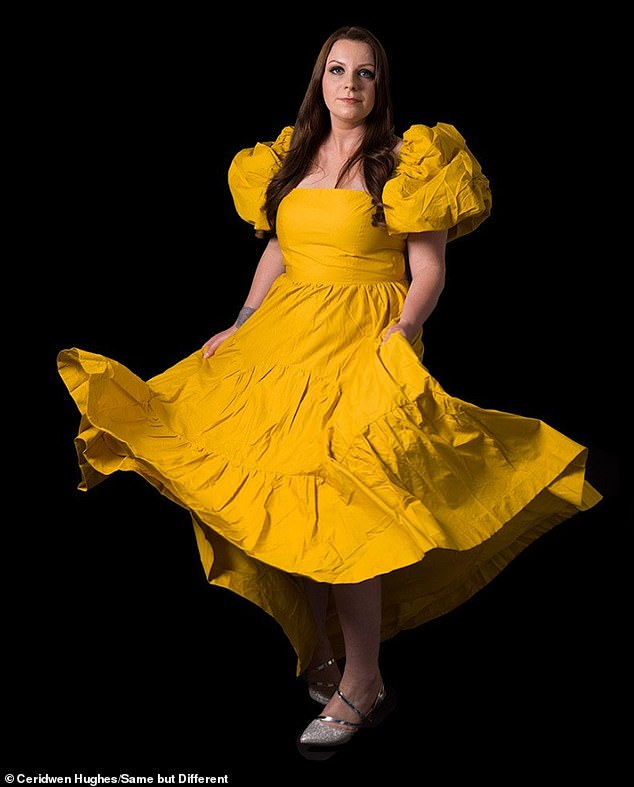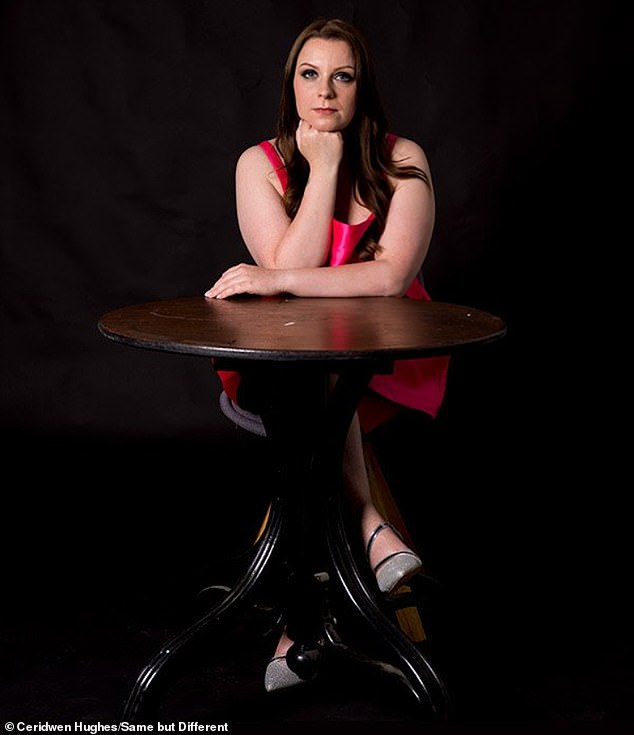I’m 30 years old with terminal cancer -these are the life lessons everyone should learn before they die
A 30-year-old woman who was given two years to live after being diagnosed with terminal cancer has revealed lessons she wants other people to know as she faces death.
Megan McClay, from Wymondham in Norfolk, has uveal melanoma, a type of eye cancer that develops in the cells that produce pigment. It is extremely rare: it affects about five in a million adults.
The retired Aviva employee was 26 when she noticed a small flashing light in the corner of her eye, which she initially attributed to a migraine.
But a year and a half ago, she was told her cancer had spread to her liver and become terminal. The doctors gave her two years to live.
Megan can now be seen in the What’s most important? exhibition at the Senedd Oriel in the Welsh Parliament in Cardiff, telling the stories of people with terminal illnesses.
Megan McClay was diagnosed with terminal cancer at the age of 30 and tells her story in the What Matters Most? exhibition
Megan’s diagnosis, which has left her blind in her left eye after undergoing intensive stereotactic radiotherapy, has caused her to re-evaluate her priorities in life.
“I want to be remembered when life becomes a huge rush, and things are moving too fast, and you’re making a career jump, and you’ve got kids running around,” she said as part of the exhibit.
“I want to remind people to stop and pause, put the phone down and take time for the people around you.
“I feel like we always strive for more, a bigger house, a bigger car, a bigger this and a bigger that, but we forget to see what we actually have in front of us.”

Megan was 26 when she first noticed a tiny flashing light in her eye, but assumed it was a migraine

She has revealed what she has learned since receiving her diagnosis – including learning to ‘stop and pause’ instead of always ‘aiming for more’
Another thing Megan has learned is how to best talk to other people about her illness.
She hopes that by joking about her illness and not avoiding the subject by using “fluffy” language, she will help other people feel “comfortable” talking to her about it.
Megan herself is comfortable talking about the end of her life and has even made plans for her care at a local hospice, but says some of her friends and family are still struggling to come to terms with it.
Megan met her partner Dimitar Kashchiev in 2018 and was diagnosed with cancer less than a year into the relationship. She didn’t tell her 10-year-old sister.
And while she says her two-year prognosis is always “really loud” in her head, she sees the idea of a bucket list as “overwhelming” and wants to spend her time however she wants.
She said: ‘What is most important to me when faced with death is that you spend the time you have the way you want to be and not the way you think you should be.
‘If you want to stay with your cat and your daughter for no matter how long you have to stay at home, then do so.
‘If you want to travel to all the countries in the world, do it, but don’t put pressure or expectations on yourself just because you’re dying. You are still you. You are still the person you were before.”

Megan met her partner Dimitar Kashchiev (pictured together) in 2018 and was diagnosed with cancer less than a year after starting the relationship

Megan’s main physical symptom is feeling exhausted, as cleaning the house can tire her out for several days
When she was first diagnosed with cancer, her treatment seemed effective and the tumor began to shrink.
After further research into uveal melanoma at the British charity Ocumel, she found that the chance of it spreading to her liver was 50 percent, and if it did, it would mean the cancer was terminal.
Eighteen months ago it was confirmed that the cancer had spread to her liver.
‘When I talk about it I try to focus on the positives, which sounds so strange when you’re talking about terminal cancer, but there are also positives, like the fact that they caught it very early and I qualify come for treatment,” Megan explained. .
“With uveal melanoma, about 15 to 20 percent of people wouldn’t even make it a year, and being in the uveal melanoma community, I see how many people we lose so often.
‘The biggest positive is that I’m still alive, which is something a lot of people can’t say. I also see more and more people defying the odds, people living four, five, six years after diagnosis, and the treatments are progressing.

Although her cancer cannot be cured, she is receiving immunotherapy to keep the cancer under control for as long as possible
‘At the very beginning I didn’t understand the seriousness of the diagnosis at all. Of course, I knew that the diagnosis of cancer is bad, but when you look at the tumor, it is the size of millimeters, small.
“I think you can deal with it and move on unscathed. I was naive, very naive. I didn’t understand the magnitude of it.
‘I think it’s difficult for people because I don’t look unwell. Sometimes I feel like it’s not really happening to me, it’s quite surreal.’
Megan’s main symptom is fatigue – and even cleaning the house can mean she needs to rest for a few days.
She said she feels frustrated with her “new body” and the fact that she finds it harder to do things she used to find easy.
She receives immunotherapy every week, which cannot treat her cancer, but can help keep it under control for as long as possible.
But because uveal melanoma is so rare, it is difficult for her to get treatment.
Through fundraisers and media appearances, Megan has raised over £80,000 so she can receive chemosaturation treatment, which is not available on the NHS.
It isolates the liver from the rest of the body and ‘bathes’ it in chemotherapy, which proves to be effective in almost 90 percent of patients.
What’s most important? The exhibition was photographed by Ceridwen Hughes, who was inspired by her own experience of end-of-life care when her mother was diagnosed with cancer in 2020.
It is a collaboration between non-profit organization Same But Different, end-of-life charities Marie Curie and Hospice UK and supported by the National Lottery Community Fund
It is on display at the Senedd Oriel until February 15.
